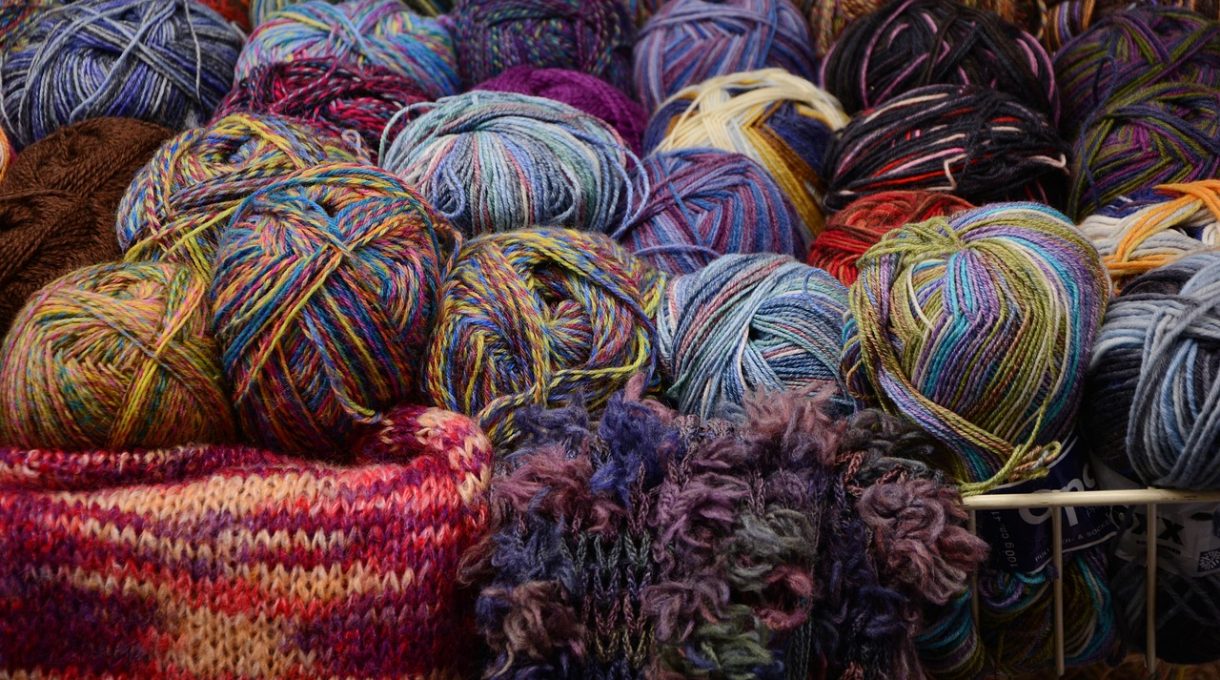Knitters are well-known as experienced savers, actively stalking yarn and constantly scouting around for new colors and textures. Once the game is bagged, they furtively store it in the nooks and crannies of their homes, much like squirrels hide nuts for a coming winter. Sometimes, it is forgotten as to where these stashes have been hidden. Coming across a misplaced cache of yarn can be a welcomed surprise, only to open the bag or box, look at the contents, wistfully mutter “maybe not yet”, and put it back where it was found.
Serious knitters love to caress skeins of yarn, testing the softness of its hand, pouring over sample cards while envisioning how this yarn and no other could knit up into that dreamy raglan-sleeved pullover with the funnel neck. The germinating ideas, though always creative, are likely too ambitious and are reined in by the constraints of available knitting time. Alas, if enough time passes between purchase and cast on, it is often forgotten why that particular yarn was purchased in the first place. Much like a financial portfolio, a yarn stash can always benefit from a scheduled review and be put to good knitting use before it suffers a devaluation in texture or color.
It seems odd but even something seemingly quite basic as yarn can start to look dated. Former trendy yarns such as chenille and fur textures, once popular, move over on the needles to make room for yarn types presently on the drawing boards of spinners and manufacturers. Even the most keen-eyed knitter is unaware of what is coming in future trends as new production techniques and methods are always in the wings. It is more than certain that innovative textures and yarn varieties will emerge and take their place on store shelves.
Of course, color can definitely date a yarn and a particular color combination can look somewhat old-fashioned within a few years, no matter how carefully it was chosen. Yarn manufacturers take great pains in “composing” their sample cards. By placing one color near a compatible hue or within groups of colors displaying the same intensity or brightness, they hope to optimize the overall visual appeal of the yarn. At this moment, color councils, who dictate color trends to the fashion industry, are hard at work choosing what colors will be fashionable two to three years from now. There is more to the popularity of certain colors than simple whim and chance. Knitting stashes can become unwitting fashion victims to these trends.
Knitted garment styles are constantly changing as well. If a particular yarn was purchased to enhance a garment style, the chosen design may have lost its appeal with the passage of time. Classic styles knit with basic yarns can help to alleviate this particular stash dilemma. It is always hard to believe that a current trend will ever go out of fashion but it is only with hindsight that we see the subtle changes and shifts in our tastes and choices. Certainly some elements may become classics but be warned not to save your yarn for too long in order to make a fashion statement.
At the rate stashers buy yarn, one might think that they have an inside track or knowledge of a hot tip in regard to an impending yarn shortage. Stashes that are saved for too long and are not turned over may require a re-evaluation of their potential. Investment of the stash for the long term would have to be done with the hope that perhaps the fashion cycles will bring these yarns back into vogue. Don’t forget to protect an investment with moth and pest repellents, review the yarn portfolio often, and increase the turnover rate of the stash. If nothing else, promise yourself that you will save plenty of time for knitting this year.
The Author:
Maddy Cranley is a professional knitwear designer, who has created exclusive designs for knitting and craft magazines, authored and published three books on the subject of creating felt garments and projects from handknitting, and produces an ever-expanding line of maddy laine handknitting patterns. For additional information, see maddycraft.com
Photo. Congerdesign
Source: Ab
